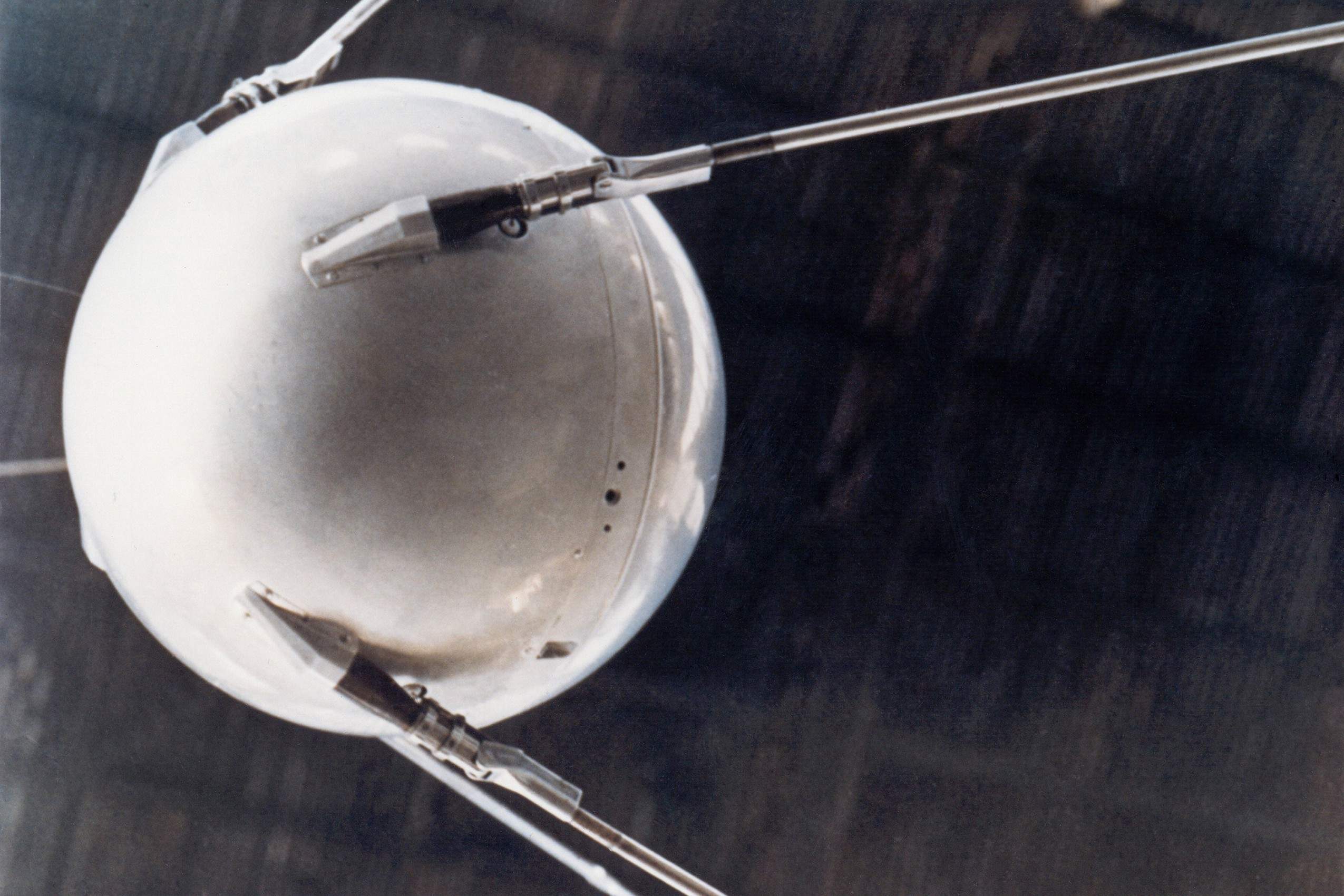
The space age began 60 years ago, when the Soviet Union satellite Sputnik 1 was launched on 4 October 1957.
Sputnik, which originally meant ‘fellow traveller,’ was the first man-made object to be launched into space. This came after the International Council of Scientific Union decided in 1954 that satellites should be launched to map the Earth’s surface.
It was seen as a major technological achievement and intensified the Cold War between the USSR and the US.
This was because there were fears that the Soviet Union now had the capacity to launch ballistic missiles to carry nuclear weapons from Europe to the US.
Sputnik 1 was used to discover information about nature and ion density of the Earth’s upper atmosphere. This was used to inform how radio frequencies would work in space, particularly whether or not astronauts would be able to communicate back to Earth.
It was closely followed by Sputnik 2 in November, which carried a dog named Laika into space. She was the first living creature to enter space but died after a few hours due to the intense heat.
How well do you really know your competitors?
Access the most comprehensive Company Profiles on the market, powered by GlobalData. Save hours of research. Gain competitive edge.

Thank you!
Your download email will arrive shortly
Not ready to buy yet? Download a free sample
We are confident about the unique quality of our Company Profiles. However, we want you to make the most beneficial decision for your business, so we offer a free sample that you can download by submitting the below form
By GlobalDataMarking the Sputnik 1 anniversary, how has the space industry changed since the first satellite?
Nasa and other space programs were born
The US’s space program was fairly basic before Sputnik 1 was launched – as this feat kicked the Americans into gear. The country eventually launched its own satellite, named Explorer I in Janaury 1958.
As well, in July 1958, Congress passed the National Aeronautics and Space Act which created the National Aeronautics and Space Administration, aka Nasa, from 1 October 1958.
It took a few years, but eventually more space programs were created around the world. India’s space agency, the Indian Space Research Organisation or ISRO, came into being in 1969. It began launching its own satellites in the 1970s.
In addition, the European Space Agency, Esa, was created in May 1975.
The end of the Cold War brought collaboration
Though the USSR and US were neck and neck during the Cold War, the fall of the Berlin Wall brought collaboration between the two nations. This led to the creation of the International Space Station (ISS). This began construction in November 1998, when the Russian-built (and American funded) Zarya module was launched into orbit.
It took 13 years to complete, costing an estimated $100bn.
A permanent crew of six or seven astronauts is in residence on the station. Though 16 countries work together on the project, the main space agencies are Nasa, Roscosmos – the Russian space agency, the Esa, Jaxa – Japan’s space agency, and CSA – the Canadian space agency. Astronauts from these agencies mainly make up the six to seven chosen to frequent the ISS.
How many satellites are in space now?
According to the Union of Concerned Scientists (UCS) there are around 1,459 satellites currently in use orbiting the Earth. This doesn’t include a number of defunct satellites, which make up the huge amounts of space debris in orbit.
We rely on satellites to offer navigation, like GPS, television, phone services, broadband and imagery, such as Google Maps.
The US has the most satellites with nearly 600 in space at the moment. The majority are commercial satellites, around 297, whilst military makes up the second amount, with a total of 150.
The growing threat from space
Due to the reliance on satellites for things like communications, mapping, weather and environmental monitoring, like all critical infrastructure, it is at risk from cyber attacks.
According to Patricia Lewis, research director of international security at Chatham House and David Livingstone, associate fellow in the same program, cyber attacks on satellites includes things like jamming and hacking communication networks, targeting control systems and attacks on ground infrastructure such as satellite control centres.
“Cyber vulnerabilities in space, therefore, pose serious risks for ground-based critical infrastructure, and insecurities in the space environment will hinder economic development and increase the risks to society,” they said.
Peter Townsend, emeritus professional of experimental physics in engineering at the University of Sussex, explained how a hack on a satellite could threaten air travel.
“There are about 30,000 flights a day over Europe. If a pilot can’t contact the airports because the satellite system has been hacked, the plane can’t land. The pilot has no way to navigate the plane. If you were a passenger, you’d be in pretty big trouble,” he told Verdict.
The private space industry is taking off
As well as the national space agencies, private companies have been making huge strides in space. In May, US-based Rocket Lab became the first private company to successfully launch a rocket into space from a private launch facility in New Zealand.
Just last week, tech entrepreneur Elon Musk said his company Space X would revolutionise travel by using its interplanetary rocket system to fly people around the world.
Using this system, he wants to allow passengers to go “anywhere on Earth in under an hour”.
In addition, Jeff Bezos, founder of Amazon, wants to use his rocket business, Blue Origin, to create an Amazon-style shipment service to the Moon to get it ready for human settlement, because why not.



